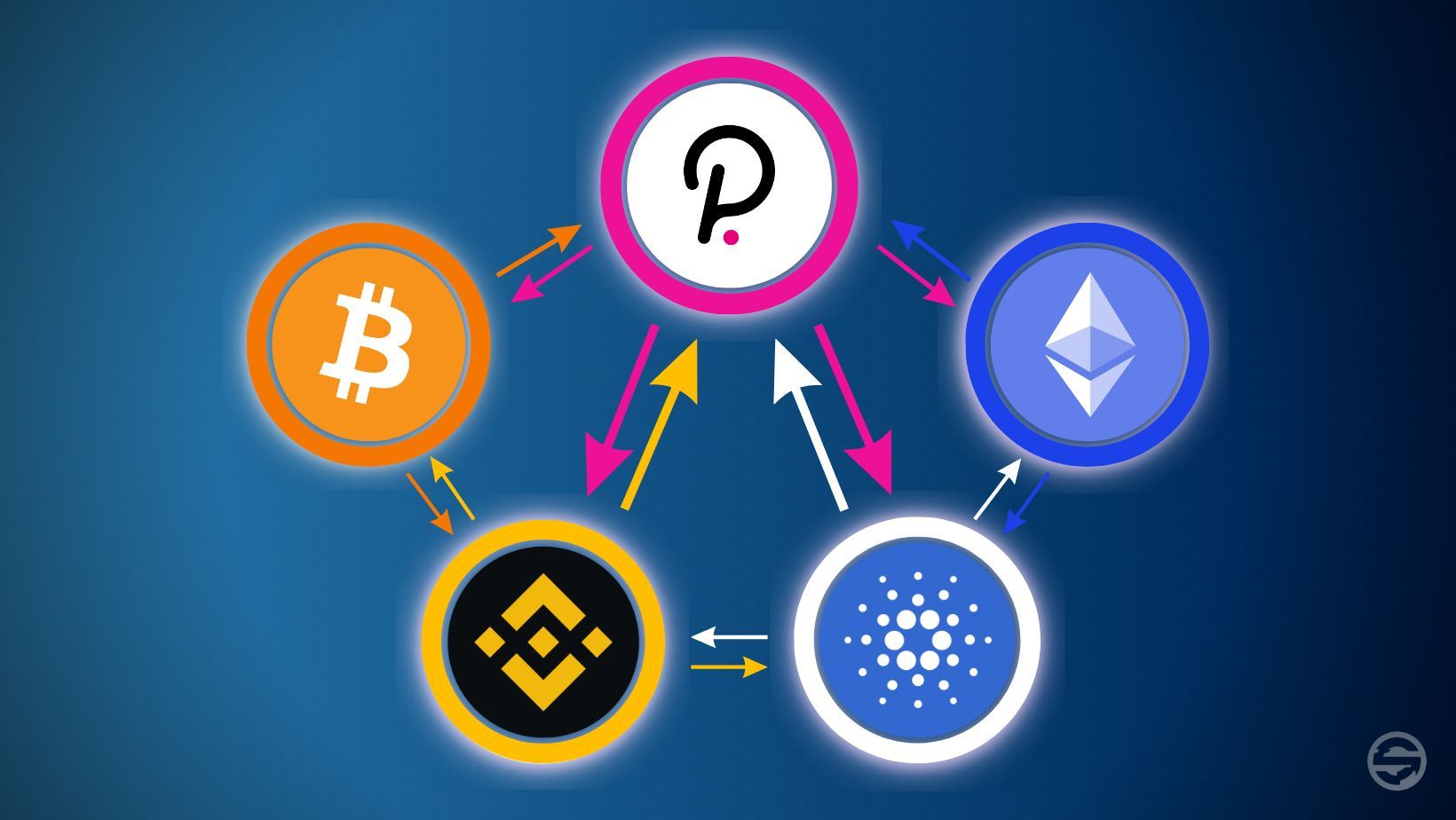
Table of contents
Blockchains are often seen as isolated silos, unable to communicate or interact seamlessly with each other. This lack of interoperability creates technical and operational barriers for developers and users, limiting the potential of blockchains and protocols.
In this context, the objective of this article is to explain the challenges and benefits of blockchain interoperability.
What is blockchain interoperability?
Blockchain interoperability can be defined as the ability of different blockchains and protocols to communicate and interact with each other in a seamless and secure way. This interoperability allows users and developers to transfer assets and data from one blockchain to another without having to go through intermediaries such as centralized platforms or incur high fees. In other words, interoperability can be seen as a bridge between different blockchains and protocols, allowing for transparent and efficient collaboration between them. Among the most well-known and used blockchains and protocols in the crypto ecosystem are Bitcoin (BTC), Ethereum (ETH), Cardano (ADA), Polkadot (DOT), Cosmos (ATOM), and Avalanche (AVAX). Each of these blockchains has its own infrastructure and rules, making their interaction difficult.
There are different types of interoperability, ranging from simple communication between blockchains to the exchange of assets and data. The main types of interoperability are:
- Communication interoperability: It allows blockchains to communicate and coordinate with each other. This can be done through application programming interfaces (APIs) or specific communication protocols.
- Value transfer interoperability: It allows for the transfer of assets between different blockchains. Projects such as Wrapped Bitcoin (WBTC) or renBTC are examples of value transfer interoperability.
- Smart contract interoperability: It allows smart contracts to interact with other smart contracts on different blockchains. This interoperability enables the creation of decentralized applications (dApps) that use smart contracts from different blockchains.
The challenges of blockchain interoperability
As we have seen, blockchain interoperability is a crucial issue for the future of the crypto ecosystem. The current fragmentation limits the possibilities for creating new projects and complicates usage for end-users.
Developers are facing increasing complexity in their work, requiring sharp skills for building bridges. This is why interoperability has become a major issue for the blockchain industry, with many projects aiming to solve this technical challenge. The ultimate goal is to create an ecosystem where different blockchains and protocols can interact smoothly and efficiently, offering greater flexibility and increased opportunities for users and developers.
In addition, users may face difficulties when transferring assets from one blockchain to another, particularly with regard to high transaction fees and confirmation delays. Interoperability can therefore simplify and improve the user experience by making asset transfers faster and less expensive.
In conclusion, interoperability is a major issue for the crypto ecosystem. To address this challenge, many projects are working on creating bridges between different blockchains and protocols. These bridges allow the different blockchains to be connected, facilitating the transfer of assets and data.
To illustrate this section, let's take the example of Cosmos (ATOM), which was created, among other things, to provide an interoperability solution between blockchains. One of its objectives is to enable blockchains to communicate with each other using a structure of custom bridges. Similarly, the Polkadot protocol (DOT) uses a parachain architecture to enable interaction between different blockchains and protocols.
- As a result, interoperability is a key issue for the crypto ecosystem. It will facilitate interaction between different blockchains and protocols, simplify the user experience, and promote the development of more advanced decentralized projects.

Conclusion
While several interoperability projects between blockchains have emerged in recent years, such as Cosmos or Polkadot, interoperability between blockchains remains a major issue in the crypto ecosystem that requires special attention. Indeed, the fragmentation of the ecosystem, the complexity for developers and users, as well as the need to build bridges between different blockchains that are often difficult to use for a crypto novice, are all challenges to be overcome.
As we have highlighted earlier, interoperability between blockchains has many advantages, including the creation of new applications and use cases, increasing liquidity and efficiency of exchanges, as well as reducing transaction costs and delays. Finally, better communication between existing blockchains would undoubtedly contribute to better adoption of this technology and cryptocurrencies by the general public. That is why it is essential that industry actors work together to develop robust and scalable solutions to meet the growing needs of users and developers, while ensuring transparent and secure interoperability.



 Blockchain
Blockchain 2023-04-25
2023-04-25
